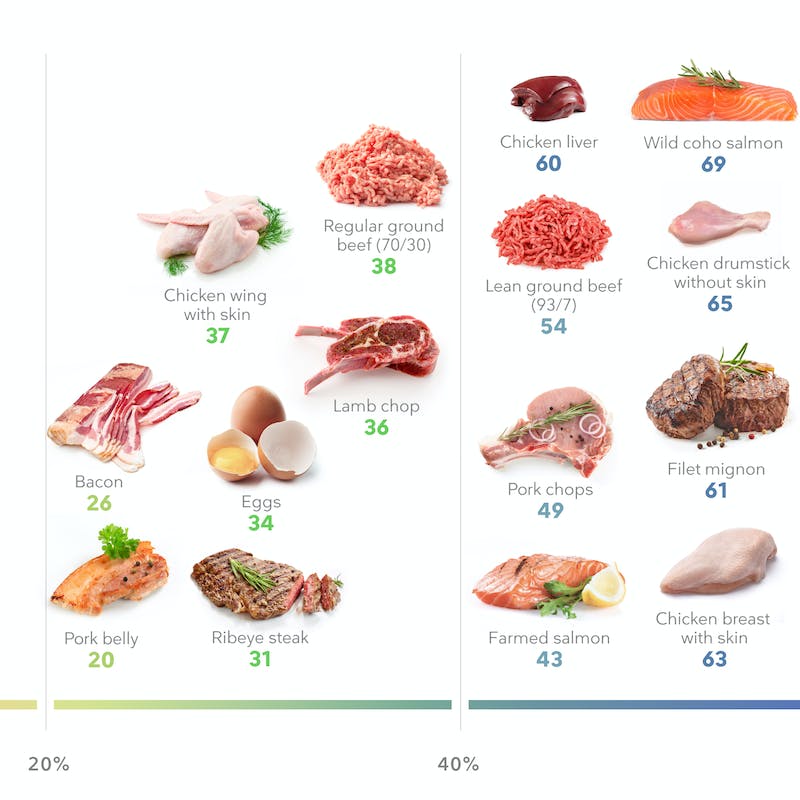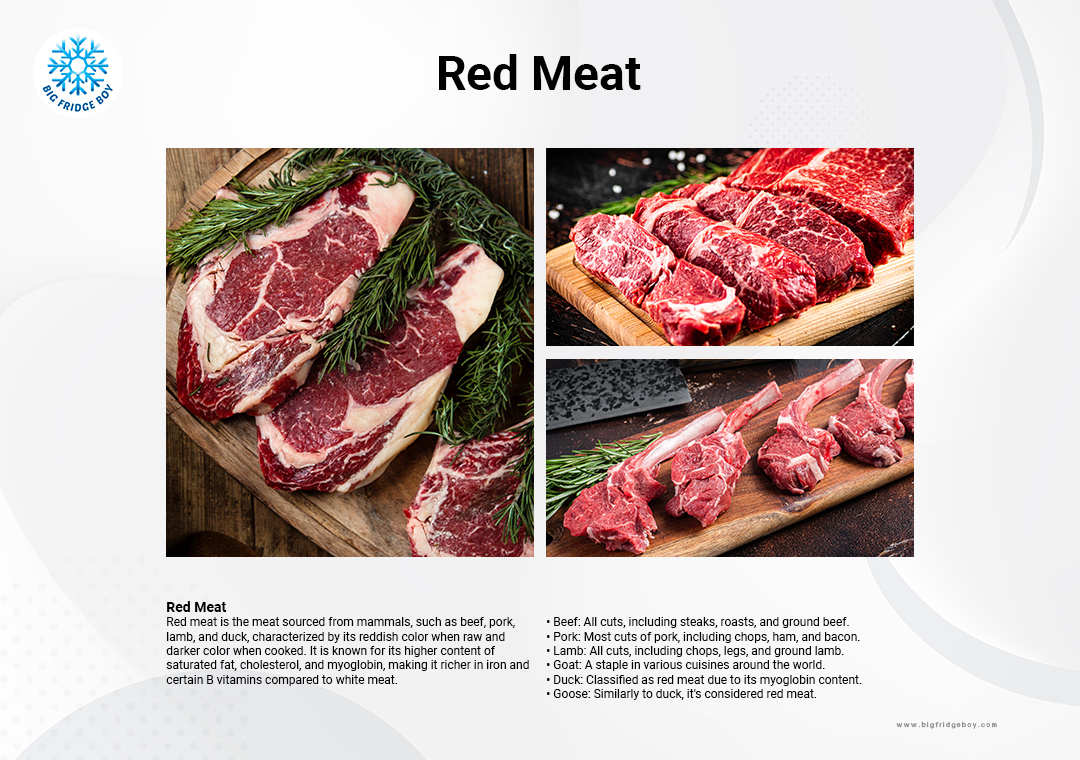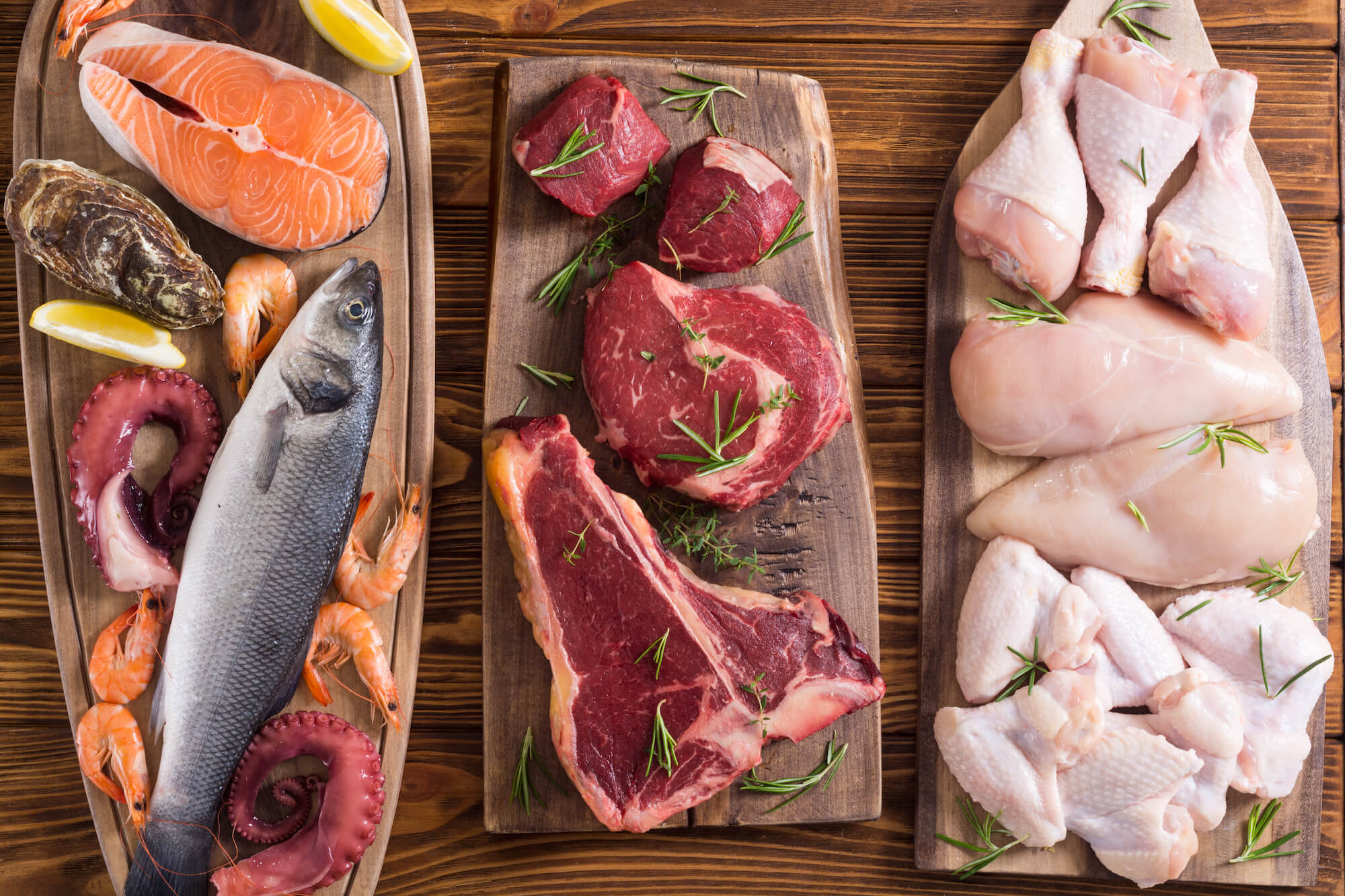
Introduction:
Overview Of The Article
This article aims to provide a detailed comparison between chicken and lamb, focusing on their nutritional content and health impacts. The discussion will revolve around the cooked forms of both meats, with broiled chicken being the main focus and a domestic form of lamb trimmed from fat being compared. By analyzing the nutrient composition, readers will gain a better understanding of these meats and their potential effects on health.
Importance Of Comparing Chicken And Lamb
Comparing chicken and lamb is significant as it allows individuals to make informed dietary choices based on their nutritional needs and health goals. By understanding the differences in nutrient profiles and health impacts, individuals can tailor their meat consumption accordingly. Whether someone is aiming for a high-protein or low-fat diet, this comparison will provide them with valuable insights into the nutritional content of these meats.
Nutritional Content Comparison:
Let’s now dive deeper into the nutritional content of chicken meat and lamb to better understand their composition and potential health impacts.
Protein Content:
- Chicken: Chicken meat is known for its high protein content, making it a popular choice among individuals looking to meet their protein needs. It contains approximately 31 grams of protein per 100 grams.- Lamb: Lamb also provides a good amount of protein, but it tends to have a slightly lower protein content compared to chicken. It usually contains around 25 grams of protein per 100 grams.
Fat Content:
- Chicken: When it comes to fat content, chicken meat is generally low in fat, especially if the skin is removed. It contains approximately 3 grams of fat per 100 grams, making it a healthier option for those watching their fat intake.- Lamb: On the other hand, lamb tends to have a higher fat content compared to chicken. However, when considering a domestic form trimmed from fat, the fat content can be reduced. It usually contains around 9 grams of fat per 100 grams.
Cholesterol Content:
- Chicken: Chicken meat is relatively low in cholesterol, with approximately 85 milligrams per 100 grams. This makes it a suitable choice for individuals who need to watch their cholesterol intake.- Lamb: Lamb, in its domestic form and when trimmed from fat, also contains a moderate amount of cholesterol. It typically has around 90 milligrams per 100 grams.
Mineral Content:
- Chicken: Chicken meat is a good source of minerals such as iron, zinc, and potassium. It provides approximately 1.3 milligrams of iron, 1.8 milligrams of zinc, and 250 milligrams of potassium per 100 grams.- Lamb: Similar to chicken, lamb is also rich in minerals. It contains about 2.4 milligrams of iron, 3.8 milligrams of zinc, and 370 milligrams of potassium per 100 grams.
Vitamin Content:
- Chicken: Chicken meat is a good source of vitamins such as niacin, vitamin B6, and vitamin B12. It provides approximately 13 milligrams of niacin, 0.5 milligrams of vitamin B6, and 0.3 micrograms of vitamin B12 per 100 grams.- Lamb: Lamb is also a good source of these vitamins. It contains about 6.4 milligrams of niacin, 0.5 milligrams of vitamin B6, and 1.4 micrograms of vitamin B12 per 100 grams.
In conclusion, comparing the nutritional content of chicken meat and lamb allows individuals to make informed dietary choices based on their specific nutritional needs. While chicken is higher in protein content and lower in fat, lamb offers its own set of benefits and provides a good amount of protein as well. By understanding these differences, individuals can select the meat that aligns with their health goals.
Nutritional Content Comparison
Nutritional Composition Of Chicken Meat
- Chicken: Chicken meat is known for its high protein content, making it a popular choice among individuals looking to meet their protein needs. It contains approximately 31 grams of protein per 100 grams.- Fat Content: When it comes to fat content, chicken meat is generally low in fat, especially if the skin is removed. It contains approximately 3 grams of fat per 100 grams, making it a healthier option for those watching their fat intake.- Cholesterol Content: Chicken meat is relatively low in cholesterol, with approximately 85 milligrams per 100 grams. This makes it a suitable choice for individuals who need to watch their cholesterol intake.- Mineral Content: Chicken meat is a good source of minerals such as iron, zinc, and potassium. It provides approximately 1.3 milligrams of iron, 1.8 milligrams of zinc, and 250 milligrams of potassium per 100 grams.- Vitamin Content: Chicken meat is a good source of vitamins such as niacin, vitamin B6, and vitamin B12. It provides approximately 13 milligrams of niacin, 0.5 milligrams of vitamin B6, and 0.3 micrograms of vitamin B12 per 100 grams.
Nutritional Composition Of Lamb Meat
- Lamb: Lamb also provides a good amount of protein, but it tends to have a slightly lower protein content compared to chicken. It usually contains around 25 grams of protein per 100 grams.- Fat Content: On the other hand, lamb tends to have a higher fat content compared to chicken. However, when considering a domestic form trimmed from fat, the fat content can be reduced. It usually contains around 9 grams of fat per 100 grams.- Cholesterol Content: Lamb, in its domestic form and when trimmed from fat, also contains a moderate amount of cholesterol. It typically has around 90 milligrams per 100 grams.- Mineral Content: Similar to chicken, lamb is also rich in minerals. It contains about 2.4 milligrams of iron, 3.8 milligrams of zinc, and 370 milligrams of potassium per 100 grams.- Vitamin Content: Lamb is also a good source of vitamins such as niacin, vitamin B6, and vitamin B12. It contains about 6.4 milligrams of niacin, 0.5 milligrams of vitamin B6, and 1.4 micrograms of vitamin B12 per 100 grams.
In conclusion, comparing the nutritional content of chicken meat and lamb allows individuals to make informed dietary choices based on their specific nutritional needs. While chicken is higher in protein content and lower in fat, lamb offers its own set of benefits and provides a good amount of protein as well. By understanding these differences, individuals can select the meat that aligns with their health goals.
Chicken Meat: Health Impacts
Pros Of Consuming Chicken Meat
- High protein content: Chicken meat is known for its high protein content, providing approximately 31 grams of protein per 100 grams. Protein is essential for building and repairing tissues, supporting immune function, and maintaining overall health.- Low in fat: Chicken meat is generally low in fat, especially if the skin is removed. It contains approximately 3 grams of fat per 100 grams, making it a healthier option for those watching their fat intake.- Beneficial minerals: Chicken meat is a good source of minerals such as iron, zinc, and potassium. These minerals are important for various bodily functions, including oxygen transport, immune system function, and nerve function.- Essential vitamins: Chicken meat is also a good source of vitamins such as niacin, vitamin B6, and vitamin B12. These vitamins play crucial roles in energy metabolism, brain function, and red blood cell production.
Cons Of Consuming Chicken Meat
- Cholesterol content: While chicken meat is relatively low in cholesterol compared to red meats, it still contains approximately 85 milligrams of cholesterol per 100 grams. Individuals with high cholesterol levels or heart disease may need to moderate their intake.- Cooking and storage safety: Chicken meat must be stored and cooked properly to prevent the risk of foodborne illnesses caused by bacteria like Salmonella or Campylobacter. Care must be taken to ensure that chicken is cooked thoroughly to kill any harmful bacteria.- Potential for contamination: Chicken meat can become contaminated with harmful bacteria during processing or handling. It is important to handle raw chicken with caution and practice good hygiene to reduce the risk of contamination.
In conclusion, chicken meat can be a healthy addition to a balanced diet due to its high protein content, low fat content (when skinless), and beneficial minerals and vitamins. However, individuals should be mindful of the cholesterol content and ensure proper cooking and storage practices to minimize the risk of foodborne illnesses. As with any food, moderation and overall dietary balance are key for optimal health.

Lamb Meat: Health Impacts
Pros Of Consuming Lamb Meat
- Rich in protein: Lamb meat is a good source of protein, providing approximately 25 grams of protein per 100 grams. Protein is necessary for muscle growth, repair, and maintenance.- Essential vitamins and minerals: Lamb meat contains important vitamins and minerals such as iron, zinc, and vitamin B12. Iron is necessary for oxygen transport, zinc supports immune function, and vitamin B12 plays a role in red blood cell production and brain function.- Healthy fats: Lamb meat contains a moderate amount of healthy fats, which are essential for hormone regulation, nutrient absorption, and cell function.
Cons Of Consuming Lamb Meat
- Saturated fat content: Lamb meat is higher in saturated fat compared to chicken meat. Consuming excess saturated fat can have negative impacts on heart health and increase the risk of cardiovascular diseases.- Cholesterol content: Lamb meat contains more cholesterol than chicken meat. Individuals with high cholesterol levels or heart disease should moderate their intake to maintain a healthy cholesterol level.- Environmental impact: The production of lamb meat can have a higher environmental impact compared to chicken meat. Lamb requires more land, water, and emits more greenhouse gases per unit of meat produced.
In summary, while lamb meat provides essential nutrients and can be a part of a healthy diet, it is important to consider the higher saturated fat and cholesterol content compared to chicken meat. Individuals with specific health concerns may need to moderate their consumption of lamb meat. Additionally, the environmental considerations of lamb meat production should also be taken into account. As with any food, maintaining a balanced and varied diet is key to overall health and well-being.
Cancer Risk
Relationship Between Red Meat (lamb) And Cancer
Recent findings support the dietary guidelines from the American Cancer Society, which recommend limiting the consumption of red meat. It has been observed that there is an association between red meat consumption and an increased risk of certain types of cancer. This includes a possible link between lamb meat and cancer. However, more research is needed to fully understand the extent of this relationship and the specific mechanisms involved.
Comparison To White Meat (chicken)
When comparing red meat (such as lamb) to white meat (such as chicken), there are some notable differences that may impact cancer risk.
Red Meat (Lamb)
- Higher saturated fat content: Lamb meat tends to have higher levels of saturated fat compared to chicken meat. Consuming excessive amounts of saturated fat can increase the risk of cardiovascular diseases and negatively impact heart health.
- Higher cholesterol content: Lamb meat also tends to contain more cholesterol compared to chicken meat. Individuals with high cholesterol levels or pre-existing heart conditions should be mindful of their lamb meat consumption to maintain healthy cholesterol levels.
- Environmental impact: The production of lamb meat has a higher environmental impact compared to chicken meat. This includes the need for more land, water, and the emission of more greenhouse gases per unit of meat produced.
White Meat (Chicken)
- Leaner alternative: Chicken is often considered a leaner alternative to red meat. It contains less saturated fat and cholesterol compared to lamb meat.
- Lower cancer risk: Research suggests that consuming poultry, such as chicken, as a substitute for red meat may help reduce the risk of certain types of cancer.
- Environmental considerations: The production of chicken meat generally has a lower environmental impact compared to lamb meat.
In conclusion, while there may be an association between lamb meat consumption and cancer risk, more research is needed to fully understand this relationship. Compared to white meat like chicken, lamb meat tends to have higher levels of saturated fat and cholesterol, which can impact heart health. Additionally, lamb meat production has a higher environmental impact. Individuals concerned about cancer risk and overall health should consider moderation and opt for leaner alternatives such as chicken. It is important to maintain a balanced and varied diet that includes other nutritious food sources to support overall well-being.
Heart Health
Impact Of Chicken Meat On Heart Health
Research suggests that choosing lean meat and skinless poultry, such as chicken, can have a positive impact on heart health. Compared to red meats like lamb, chicken meat generally has lower levels of saturated fat. Consuming excessive amounts of saturated fat can raise blood cholesterol levels and increase the risk of heart disease. By opting for lean chicken meat, individuals can reduce their saturated fat intake and support a healthy heart.
Impact Of Lamb Meat On Heart Health
On the other hand, lamb meat tends to have higher levels of saturated fat compared to chicken meat. Consuming excessive amounts of saturated fat from red meats like lamb can increase the risk of cardiovascular diseases. Additionally, lamb meat also tends to contain more cholesterol compared to chicken meat. Individuals with high cholesterol levels or pre-existing heart conditions should be mindful of their lamb meat consumption to maintain healthy cholesterol levels and promote heart health.
In summary, when it comes to heart health, choosing lean meat and skinless poultry is recommended. Chicken meat is a leaner alternative compared to lamb meat, as it contains less saturated fat and cholesterol. By reducing the intake of saturated fat and cholesterol from red meats like lamb and opting for leaner alternatives like chicken, individuals can support their heart health. However, it is important to note that overall dietary patterns and other lifestyle factors also play a significant role in heart health. It is always advisable to consult with a healthcare professional or registered dietitian for personalized dietary recommendations.

Weight Management
Chicken Meat’s Role In Weight Management
Chicken meat can be a beneficial choice for individuals looking to manage their weight. With only 165 calories per 100 grams of cooked chicken breast, it is relatively low in calorie content. Incorporating chicken into your meals can help create a calorie deficit, thereby promoting weight loss. Additionally, chicken is a good source of lean protein, which can help increase satiety and prevent overeating.
Lamb Meat’s Role In Weight Management
Although lamb meat contains more calories compared to chicken, with 204 calories per 100 grams of lamb sirloin, it can still be part of a balanced weight management plan. While enjoying lamb occasionally is unlikely to significantly hinder weight loss efforts, it is important to be mindful of portion sizes and frequency of consumption. Including lean cuts of lamb and balancing it with other low-calorie foods can help maintain a calorie-controlled diet.
In conclusion, when it comes to weight management, chicken is generally a more favorable choice due to its lower calorie content and higher protein content. However, including lamb in moderation as part of a well-rounded diet can still be enjoyed without compromising weight loss goals. It is important to remember that individual weight management strategies may vary, and consulting with a healthcare professional or registered dietitian can provide personalized advice based on specific needs and goals.
Conclusion
Overall Summary Of The Comparison
Based on the comparison between chicken and lamb meat, it is clear that both types of meat have their own nutritional benefits. Chicken meat is lower in calorie content and higher in lean protein, making it a favorable choice for weight management. On the other hand, lamb meat contains more calories but can still be enjoyed in moderation as part of a balanced diet.
Recommendation On Poultry Vs. Red Meat Consumption
In terms of weight management, incorporating chicken meat into meals can be beneficial due to its lower calorie content and higher protein content. It can help create a calorie deficit and promote weight loss. However, including lamb meat in moderation can still be enjoyed without compromising weight loss goals.
When considering overall health, it is important to have a varied diet and include a range of protein sources. Both chicken and lamb offer different nutritional profiles, and incorporating both into a balanced diet can provide a wider range of nutrients.
It is also worth noting that individual dietary needs and preferences may vary. Some individuals may prefer the taste of lamb over chicken, while others may have cultural or personal reasons for consuming one over the other. In such cases, it is important to focus on portion sizes, choose lean cuts of meat, and balance it with other nutritious foods.
Ultimately, the decision between poultry and red meat consumption should be based on personal preferences, dietary restrictions, and health goals. Consulting with a healthcare professional or registered dietitian can provide personalized advice based on individual needs and goals.
In conclusion, both chicken and lamb can be part of a healthy diet when consumed in moderation and as part of a balanced meal plan. It is important to consider portion sizes, cooking methods, and overall dietary patterns to ensure a well-rounded approach to nutrition and weight management.
FAQ: Chicken vs Lamb – Comparing Poultry and Red Meat Options
Q: Which meat is healthier: chicken or lamb?
A: When it comes to healthiness, both chicken and lamb have their own advantages and considerations. Chicken is generally considered a leaner protein, making it a good choice for those watching their calorie intake or aiming for weight loss. On the other hand, lamb contains more fat and is a source of essential nutrients such as iron, vitamin B12, and zinc. Ultimately, it depends on your dietary needs and preferences.
Q: Which meat is more protein-rich: chicken or lamb?
A: Both chicken and lamb are excellent sources of protein, vital for muscle growth and repair. Chicken breasts are known to provide a high protein content, with around 31 grams per 100 grams, making it an excellent choice for those looking to increase their protein intake. Lamb, while still rich in protein, contains slightly less, with approximately 25 grams per 100 grams.
Q: What are the differences in taste and texture between chicken and lamb?
A: Chicken is known for its mild and versatile flavor, making it a popular choice in various cuisines. It has a tender texture, especially when prepared properly. On the other hand, lamb has a distinct, slightly gamey flavor that can be strong for some individuals. Its texture is generally more chewy and dense compared to chicken.
Q: What are the cooking methods suitable for chicken and lamb?
A: Chicken is incredibly versatile when it comes to cooking methods. It can be grilled, baked, roasted, fried, or even slow-cooked. Lamb, on the other hand, is often best enjoyed when slow-cooked or roasted to allow the flavors to develop fully. It can also be grilled or stewed depending on the cut.
Q: Which meat is more affordable: chicken or lamb?
A: In most cases, chicken tends to be more budget-friendly compared to lamb. The cost of lamb can vary significantly depending on the cut and quality, often making it more expensive than chicken. However, prices can vary depending on your location and availability, so it’s always good to check local prices.
Q: Are there any cultural or dietary preferences associated with chicken and lamb?
A: Different cultures have various preferences for chicken and lamb. Chicken is widely consumed globally and is a staple in many cuisines, from fried chicken in the United States to stir-fried dishes in Asian cuisine. Lamb, on the other hand, is particularly popular in Middle Eastern and Mediterranean cuisines. It may also play a significant role in religious dietary practices for some individuals.
Q: Which meat is more environmentally friendly: chicken or lamb?
A: Chicken generally has a lower environmental impact compared to lamb. Producing chicken requires less land, water, and resources compared to raising lambs. Additionally, chicken produces fewer greenhouse gas emissions. However, it’s worth mentioning that sustainable and ethical farming practices play a crucial role in reducing the environmental impact of any meat production.
In conclusion, the choice between chicken and lamb ultimately depends on individual preferences, dietary needs, and cultural influences. Both meats offer their unique flavors, textures, and nutritional benefits. It’s always a good idea to consider your overall diet, health goals, and environmental impact when making a decision.

Spice up Your Life with Spicy World – Where Chinese Cuisine Meets Passion!